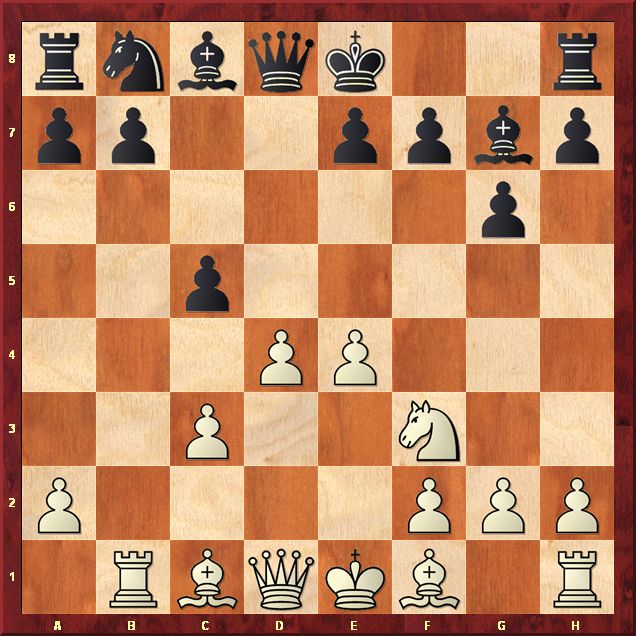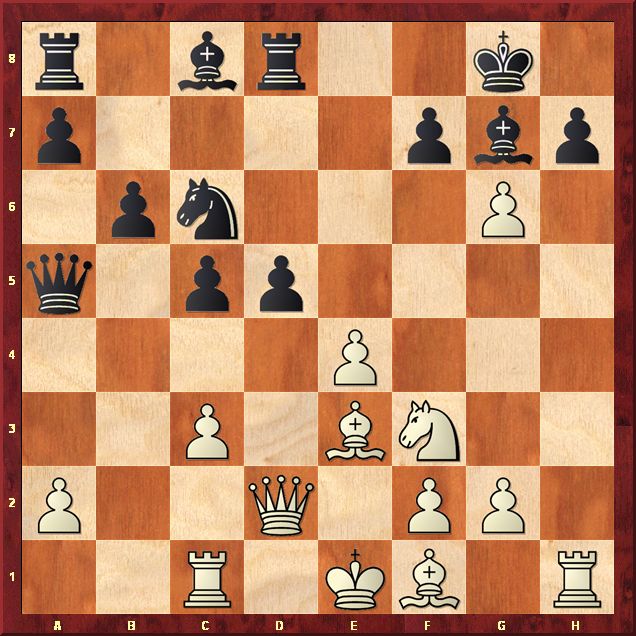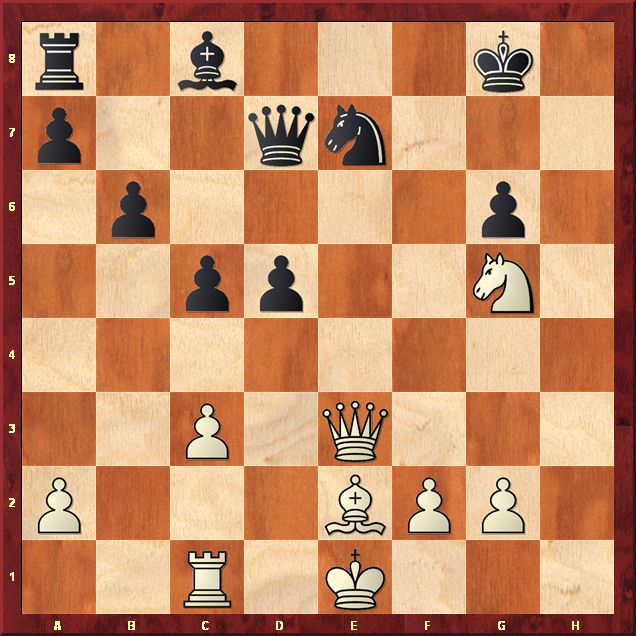Precision, mistake-free play and machine-like calculations were the highest accolades for the top chess players. Remember what the former world champion, Tigran Petrosian, said after he was eliminated by Bobby Fischer from the world championship cycle in 1971? "As soon as Fischer gains even a slightest advantage, he begins playing like a machine. You cannot even hope for some mistake." Nowadays, it seems to be the other way around. "They played like human beings," is the best compliment we can pay to chess computers. When they do play like us, we get emotional: we feel for them, love them and embrace them.
Chess computers were not only praised for making human-like moves, but they were also accused of playing them. The former world champion Garry Kasparov still holds a grudge against IBM's Deep Blue computer after he was defeated by the machine in 1997. "It made human moves," he said, implying that the computer was unfairly helped by the IBM team during the play. Despite seeing the game logs and reading the denials of the team members, Kasparov remains unconvinced.
The top commercial chess computer program is Rybka, a "small fish" in Czech. Rybka 4, the newest version of its Czech-American programmer, IM Vasik Rajlich, was recently released by Chessbase. At the end of May, the program also triumphed at the 10th International Computer Chess tournament in the Dutch city of Leiden. It won eight games and lost to Deep Sjeng, which finished a full point behind the winner. But it was not this defeat that caught my attention.
In a recent computer tournament, ran by Martin Thoresen in Norway, Rybka 4 lost to a program with another fish name, the Stockfish. The name suggests a dead fish, but in this game it came wonderfully alive. It was a typical Grunfeld Indian game, a classic confrontation between a strong pawn center and active piece play with a romantic aura that would have pleased players from 19th century. It is a chaotic masterpiece in which one king goes for a walk, the other is hunted and the sacrifices range from pawns to queens.
I saw the moves on Mig Greengaard's inspirational Daily Dirt site where one finds great, passionate debates on many chess topics. Here it is with my comments:
Stockfish 1.7.1 - Deep Rybka 4
1.d4 Nf6 2.Nf3 g6 3.c4 Bg7 4.Nc3 d5 5.cxd5 Nxd5 6.e4 Nxc3 7.bxc3 (The machines reached the modern version of the Exchange variation of the Grunfeld defense with the white knight being anchored on the square f3.) 7...c5 (The attack on the most sensitive point in White's center, the pawn d4, begins. The move also allows Black to slide his Queen to the square a5, creating several crosspins on the diagonals a1-h8 and e1-a5.) 8.Rb1 (The Rook escapes from the long shadow of the dark bishop on g7 and prevents 7...Qa5. Reversing the move order with 8.Be3, gives Black a chance to seek comfort in the endgame with 8...Qa5 9.Qd2 Nc6 10.Rc1 cxd4 11.cxd4 Qxd2+ 12.Kxd2.)

8...0-0 (The bullheaded 8...Qa5? is refuted by 9.Rb5! and Black has problems after 9...Qxc3+ 10.Bd2 Qa3 11.Qc2!, threatening to catch the Queen either with 12.Ra5 or with 12.Rb3 Qa4 13.Bb5. After 9...Qxa2 10.Rxc5 Black has to be careful, for example 10...0-0? 11.Bc4 Qa1 12.Bxf7+! Kxf7 13.Qb3+ and White wins: 13...e6 14.Rxc8! Rxc8 15.Ng5+ Kf8 16.0-0 Qa6 17.Nxe6+ Ke7 18.Ba3+; or 13...Be6 14.Ng5+ Ke8 15.Nxe6 Qxc1+ 16.Ke2 Qxh1 17.Nxg7+ Kd8 [17...Kd7 18.Qd5 mate] 18.Qxb7 and White mates.) 9.Be3 (Planning Qd1-d2 with the idea Be3-h6, exchanging the dark Bishops. In the last 30 years, the most work among the top players has been done in the line 9.Be2 cxd4 10.cxd4 Qa5+ 11.Bd2 Qxa2 12.0-0. White's strong pawn center is a good compensation for the sacrificed pawn.) 9...Qa5 (The endgame 9...cxd4 10.cxd4 Qa5+ 11.Qd2 Qxd2+ 12.Kxd2 Nc6 13.Bd3 Rd8 14.d5 is less pleasant, but Black can seek counterplay with 9...Nc6 10.Qd2 cxd4 11.cxd4 Bg4, for example 12.d5 Bxf3 13.gxf3 Ne5 14.Be2 Qc8! 15.0-0 Qh3 equalizing.) 10.Qd2 (10.Rb5? doesn't work. After 10...Qxc3+ 11.Bd2 Qa3 12.Rxc5 Nc6 White's center is hanging.) 10...b6 (10...Nc6!? leads to a promising Queen sacrifice 11.Rb5 cxd4! 12.Rxa5 dxe3 13.Qxe3 Nxa5, first appearing in the game Vaganian-Tseshkovsky, Erevan 1982. White may still claim some advantage after 14.Nd4 Bd7 15.e5 Rfc8 16.f4 Rc7 17.Bb5! as in the game Akobian-Howell, Wijk aan Zee 2010.)

11.h4!? (It didn't take the machine long to find this novelty, but is there enough time to pound Black's kingside with the h-pawn without surrendering the center? The usual moves 11.Rc1 or 11.Rb5 should not bother Black.) 11...Rd8 (Black can tackle the white center differently: 11...Nc6 12.Rc1 Bg4 13.d5 Rad8, but White can strike with 14.h5!?, for example 14...Bxh5?! 15.Bh6!, threatening 16.Rxh5 gxh5 17.Qg5 mating; or 14...gxh5 15.Qb2!? Bxf3 16.gxf3 Ne5 17.f4! Ng6 18.Rxh5 with white's edge.) 12.Rc1 (Overprotecting the c-pawn, allows White to push his d-pawn forward.) 12...Nc6 13.d5 e6?! (Black believes that he has time to undermine White's pawn center, but it is a dangerous assumption. The tsunami comes in very quickly. Seeking relief with 13...Qa4 gives White the edge after 14.Qc2 Qxc2 15.Rxc2 Ne5 16.Nxe5 Bxe5 17.h5 e6 18.Bc4, but it was a better choice.) 14.h5! (Picking up the speed.) 14...exd5 15.hxg6!? (Instead of playing the expected 15.exd5, White goes full throttle, accelerating the attack.)

15...hxg6?! ( Rybka makes a little slip. After 15...dxe4? 16.gxh7+ Kh8 [16...Kf8 17.h8Q+ wins.] White plays 17.Bh6! Bf6 18.Bg5 Bg7 19.Ne5! Bxe5 20.Bxd8 Be6 21.Bg5 with advantage, but Black can defend better against the assault on the h-file with 15...fxg6!, for example 16.Bh6 Bh8! 17.exd5 Ba6 18.d6!? c4! 19.Be2 Rd7 and the game goes on.) 16.Bh6! (Sacrificing two pawns, but exchanging the dark Bishops leaves the black King trembling.) 16...Re8 (Greedy, but what else is there? After 16...dxe4? White wins by sacrificing the Queen 17.Bxg7!, for example 17...Rxd2 18.Bf6, threatening 19.Rh8 mate; and after 17...Kxg7 18.Qh6+ Kf6 19.Qg5+ Kg7 20.Ne5! and Black is lost, for example 20...Bd7 21.Nxc6 Bxc6 22.Qe5+ f6 23.Qe7+ Kg8 24.Bc4+ Bd5 25.Qxf6 and White mates. Can Black avoid the trade and play 16...Bh8? White continues with 17.Bg5!, threatening to sacrifice the Exchange on h8 and use the weak dark squares for a mating attack. For example, 17...dxe4? 18.Rxh8+! Kxh8 19.Bf6+ Kh7 20.Qg5 c4 21.Ne5, threatening 22.Qh4+ and 23.Qh8 mate. Black also loses after 17...Re8 18.Rxh8+ Kxh8 19.Bf6+ Kh7 [ or 19...Kg8 20.Qh6!] 20.Ng5+ Kg8 21.Qxd5 Be6 22.Qxc6.) 17.Bxg7 Rxe4+ 18.Be2 Kxg7 (After 18...Rxe2+ 19.Kxe2 Ba6+ 20.Kd1 Qa4+ 21.Rc2 Kxg7 white gets a decisive attack with 22.Rh4! d4 23.Qh6+ Kf6 24.Rf4+ Ke6 25.Qg7!) 19.Ng5 Re7 (Giving up the Exchange 19...Rxe2+ leads to a triumphant King parade: 20.Kxe2 Ba6+ 21.Kf3 Nd4+ 22.Kg4! f5+ 23.Kf4 Ne2+ 24.Ke5, for example 24...Re8+ 25.Ne6+ Rxe6+ 26.Kxe6 Nd4+ 27.Ke5 and White wins.) 20.Rh7+ Kg8 21.Rxf7! (Breaking through.) 21...Qa4 (Preventing 22.Qf4. Capturing the Rook 21...Rxf7 loses to 22.Qxd5. After 21...Qa3? 22.Qf4! Rxe2+ 23.Kxe2 Ba6+ 24.Kf3 wins.) 22.Rxe7 Nxe7 23.Qe3 Qd7 (It seems that Black is almost escaping, but White activates the last attacking piece.)

24.Kd2! (The King makes a victorious step, preparing to swing the rook to the h-file. Black is in dire straits and has to cover the vulnerable dark squares.) 24...Qd6 (After 24...Nf5 25.Qe5 Ng7 26.Bd3 White has a winning attack.) 25.Rh1 Qf6 (Black has to cover the square h8. After 25...Bf5 26.Rh8+ Kxh8 27.Nf7+ wins.) 26.Nh7! (Chasing the black Queen away from supporting the black King. White's storm is unstoppable.) 26...Qd6 (After 26...Qg7 27.Qg5! Kf7 28. Qf4+ Bf5 29.g4 White wins a piece.) 27.g4! (The immediate 27.Qf3! Bf5 28.g4 also worked.) 27...c4 (Black is left without counterplay: 27...d4 loses to 28.Bc4+.) 28.g5 (Securing a nice outpost on f6, but 28.Qf3! wins, too.) 28...d4 29.Qf3 (A decisive double-attack.) 29...dxc3+ 30.Ke1 Qd2+ (After 30...Nd5 31.Bxc4 Be6 32.Bxd5! wins, for example 32...c2 33.Nf6+ Kf8 34.Ne8+! Kxe8 [34...Kg8 35.Rh8+! Kxh8 36.Qf6+ mates] 35.Rh8+ Kd7 36.Rh7+ Kc8 37.Qc3+ mating soon.) 31.Kf1 Qc1+ 32.Bd1 (After 32...Bb7 33.Nf6+ Kf8 34.Rh8+ Kg7 35.Ne8+! Kxh8 [35...Rxe8 36.Qf6 mate] 36.Qf6+ and 37.Qg7 mate.) Black resigned.
For a live replay:
Note that in the replay windows below you can click on the notation to
follow the game.
